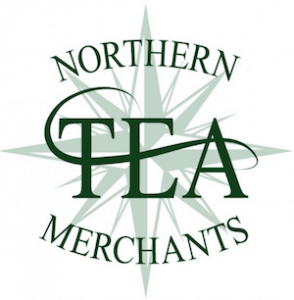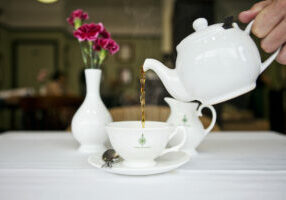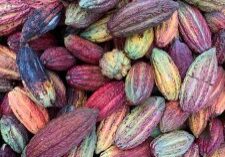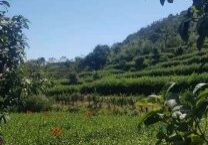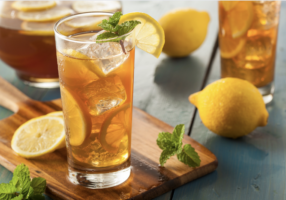The English Language and indeed, the Tasting Room at Northern Tea Merchants has had to contend with finding words to describle flavours of tea for generations. Here is where we are at with it all…!
We all love tea – BUT what words would you use to describe your favourite drink and the appearance of its leaves, both dry and infused? ‘Brown, Wet & Warm’ simply won’t cut the mustard!
Terminology that describes dry Tea Leaves:
BLACK: – A black appearance is desirable, preferably with ‘BLOOM’. This term is used with Orthodox (Large Leaf) manufacture.
BLACKISH: – This is a satisfactory appearance for a small leaf black tea and denotes careful sorting at the factory.
BLOOM: – A sign of good manufacture and sorting (where the reduction of leaf has mainly taken place before firing). A ‘sheen’ which has not been removed by over handling or over sorting.
BOLD: – Particles of leaf which are too large for the particular grade being observed.
BROWN: – A brown appearance with CTC manufacture, which normally reflects too hard handling of the leaf.
CHESTY: – Inferior or damp packing materials cause this taint.
CHOPPY: – Orthodox leaf which has to be cut with a breaker during sorting.
CHUNKY: – A very large broken from Orthodox manufacture.
CLEAN: – Leaf which is free from fibre, dust or any extraneous matter.
CREPY: – A crimped appearance common with the larger grade brokens from orthodox manufacture, such as Broken Orange Pekoe
CURLY: – The leaf appearance of whole leaf grade orthodox teas such as Orange Pekoe – as opposed to ‘WIRY’.
EVEN: – True to the grade and consisting of pieces of leaf quite even in size.
FLAKEY: – Flat, open and often light in texture.
GREY: – Caused by too much abrasion in sorting.
GRAINY: – Describes well made CTC primary grades, particularly Pekoe Dust and Dust 1 Grades
LEAFY: – Orthodox manufacture leaf tending to be on the large or long side.
LIGHT: – A tea light in weight and of poor density. Sometimes ‘FLAKEY’.
MAKE: – Well made (or not) and must be true to the grade.
MUSHY:- A tea which has been packed or stored with a high moisture content.
MUSTY: – A tea affected by mildew.
NEAT: – A grade having good ‘MAKE’ and size
NOSE: – Smell of the dry leaf.
POWDERY: – Fine light dust. No use in leaf tea or tea bags!
RAGGED: – An uneven badly manufactured and graded tea.
STALK & FIBRE: – Should be minimal in primary or top grades, but generally unavoidable in the lower grades of an assorted batch.
TIP: – A sign of fine plucking and apparent in the top grades of Orthodox manufacture.
UNEVEN & MIXED: – Uneven pieces of leaf usually indicative of poor sorting and not true to the particular grade.
WELL TWISTED:- Applicable to Orthodox manufacture. Often referred to as ‘well made’ or ‘rolled’ and used for describing whole leaf grades.
WIRY: – Leaf appearance of a well – twisted, thin leaf Orthodox tea.
Terminology that describes infused tea leaves.
AROMA: – Smell or scent denoting ‘inherent character’, usually at high elevations.
BISCUITY: – A pleasant aroma often found in well – fired Assams.
BRIGHT: – A lively bright appearance. Usually indicates bright liquors.
COPPERY: – A bright leaf which usually indicates a well manufactured tea.
DULL: – Lacks brightness and usually denotes a poor tea. Can be due to faulty manufacture and firing, or a high moisture content.
DARK: – A dark or dull colour which usually indicates poorer leaf.
GREEN: – Caused by under – fermentation, or characteristic of leaf from immature bushes (liquors are often RAWor LIGHT). Can also be caused by poor rolling with Orthodox teas.
MIXED or UNEVEN: – Leaf of varying colours.
TARRY: – A smoky aroma
Terminology describing the flavour of liquored (brewed) tea.
BAGGY: – A taint normally resulting from unlined hessian bags. (Rarer today now tea is shipped in foil lined paper sacks).
BODY: – A liquor having both fullness and strength, as opposed to being ‘THIN’.
BAKEY: – An over – fired liquor. Tea in which too much moisture has been driven off. Can also be described as ‘TOASTY’.
BRIGHT: – Denotes a lively fresh tea with good keeping quality.
BRISK: – The most ‘live’ characteristic. Results from good manufacture.
BURNT: – Extreme over firing. It is unlikely that such over – fired tea would make it as far as the quality end of the market that most readers will inhabit, but often these teas are sold to be used in accountant – designed blends such as very cheap supermarket own – label brands.
CHARACTER: – An attractive taste when describing better high elevation growth, and peculiar to origin
COLOURY: – Indicates useful depth of colour and strength.
COARSE: – Fibre content. Again, coarse teas are usually cheap and nasty. They are also a nightmare to pack due to exceptional bulk density variation. I have also heard these teas described as ‘HAIRY DOGS’.
COMMON: – A very plain, light and thin liquor with no distinct flavour.
CREAM: – A precipitate obtained after cooling. Selling brokers often ‘cream’ Assam teas, which means they allow them to stew until cold (20 minutes infusion!). If the result looks like cream of tomato soup, this means that the tea will stand well in a warehouse. It will also destroy your palate for an hour or two. Creamed teas are assessed by eye, not taste buds!
DRY: – Indicates slight over – firing.
DULL: – Not clear, and lacking any brightness or briskness.
EARTHY: – Normally caused by damp storage. A taste which can at times be climatically inherent in leaf from certain origins.
FLAT: – Unfresh, usually due to age.
FLAVOUR: – A most desirable extension of ‘CHARACTER’, caused by slow growth at high elevations and comparatively rare.
FULL: – A good combination of strength and colour
FRUITY: – Can be due to over – fermentation and/or bacterial infection before firing. An over-ripe taste.
GONE OFF: – Self explanatory. A flat or old tea. Also used to indicate a high moisture content.
GREEN: – An immature, ‘raw’ character. Often due to under-fermentation and sometimes under withering.
HARD: – A very pungent liquor.
HARSH: – A taste generally related to under – withered leaf, and very rough.
HEAVY:- A thick, strong and coloury liquor with limited briskness.
HIGH-FIRED: – Over fired but not ‘BAKEY’, ‘TOASTY’ or ‘BURNT’.
LIGHT: – Lacking strength and any depth of colour.
MATURE: – But not bitter or ‘FLAT’. A positive term that is occasionally applied to Darjeelings, which can actually improve with age.
METALLIC: – A sharp coppery flavour. Can also be described as ‘BRASS SPOON’.
MUDDY: – A dull, opaque liquor.
POINT: – A bright, acidy and penetrating characteristic.
PLAIN: – A liquor which is ‘clean’ but lacking in other desirable characteristics.
PUNGENT: – Astringent with a good combination of briskness, brightness and strength. Often
used to describe good quality North Indian (Assam) teas.
QUALITY: – Refers to cup quality and denotes a combination of the most desirable liquoring qualities.
RASPING: – A very ‘COARSE’ and ‘HARSH’ liquor.
RAW: – A bitter and unpleasant liquor.
SMOKEY: – Often caused by leaks around the dryer heating tubes. When describing Lapsang Souchong tea, however, smokiness is an absolute necessity!
SOFT: – The opposite of ‘BRISK’ and lacking any live characteristic. Caused by inefficient fermentation and/or firing.
STRENGTH: – Substance in the cup
STEWED: – A ‘SOFT’ liquor with an undesirable taste caused by faulty firing at low temperatures and often insufficient air flow. Lacking in ‘POINT’
TAINTS: – Characteristics or tastes which are alien to the tea being tasted, such as diesel or
their own.
THIN: – An insipid, light liquor which lacks any desirable characteristics.
WEEDY: – A grass or hay taste related to under withering. Can also be referred to as ‘WOODY’.
Makes you think, doesn’t it! All this flavour from leaves of the camellia plant! That’s why I love tea so much. I owe much of this document to my father and grandfather, although the contributions and corrections from our three main brokers, Messrs Thompson, Lloyd & Ewart, Van Rees (UK) Ltd and I&M Smith (Pty) Ltd allow me to dare to put it on the web!
